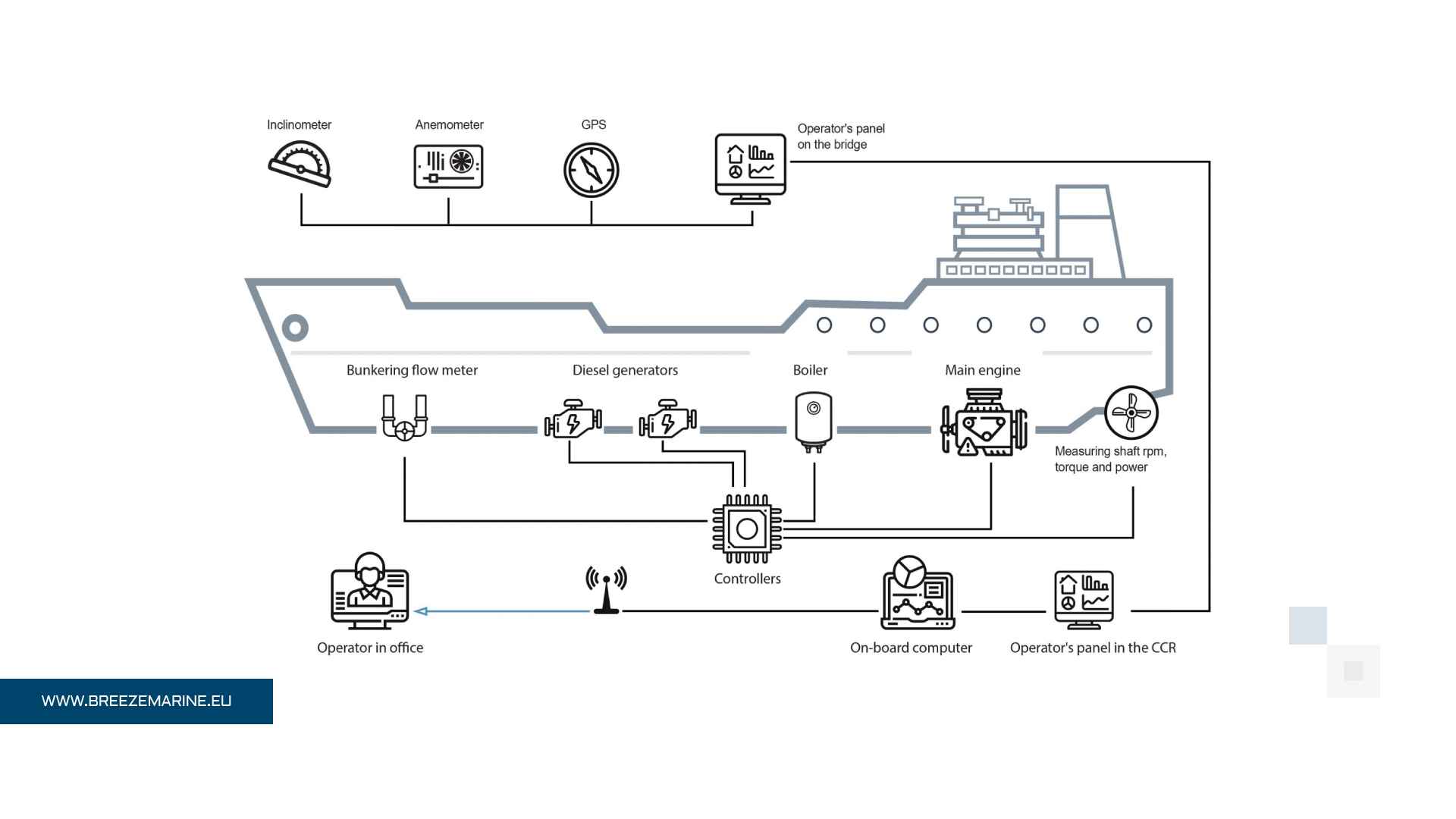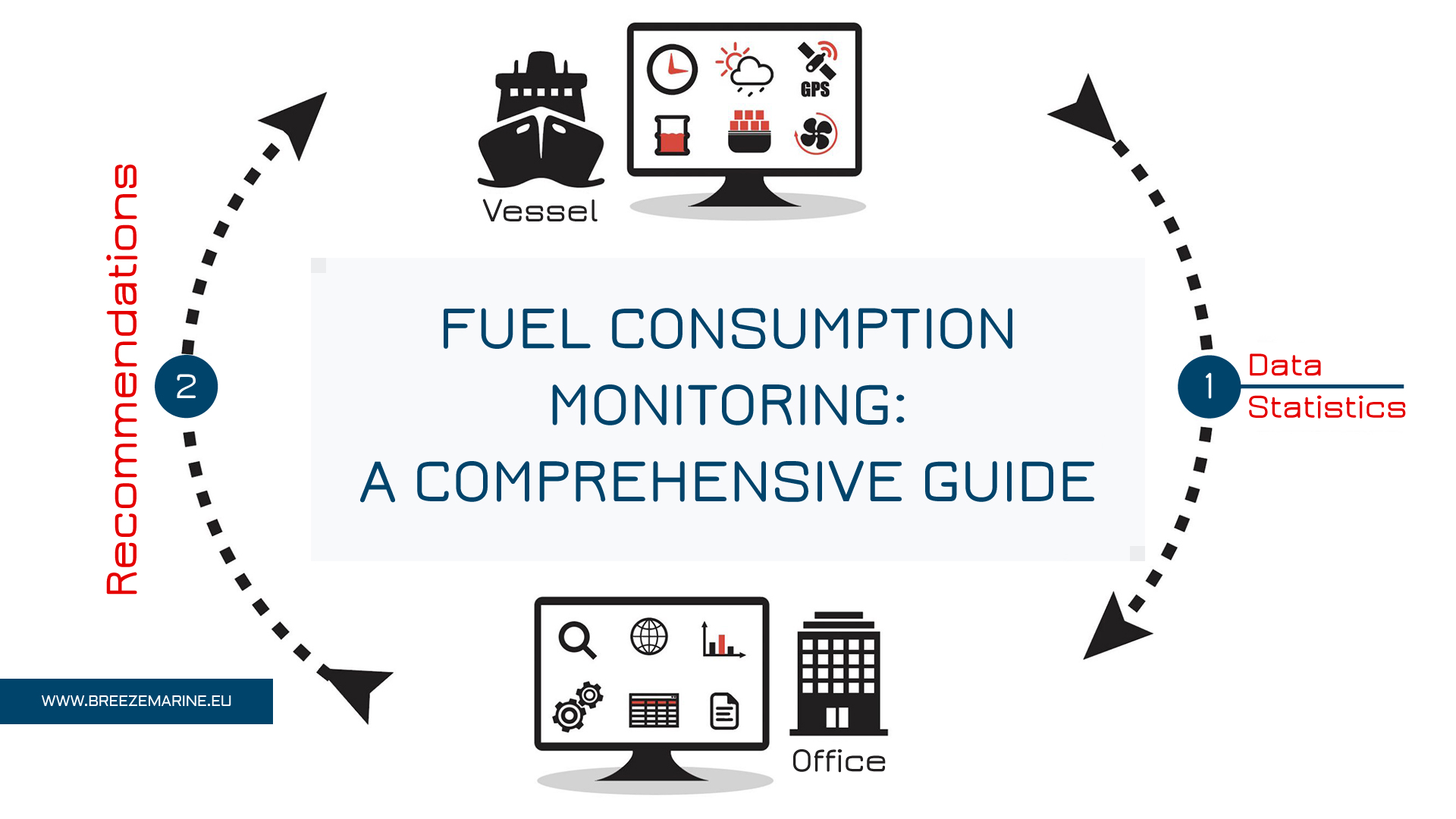Monitoring fleet fuel consumption establishes a reasonable need for operational fuel reserves and ensures control over its effective use.
The norm of fuel consumption consists of the following:
- the technically and economically justifiable quantity of fuel intended for consumption on the installed gauge of operation in the properly organized operation of the power plant
- its serviceable technical condition
- full utilization of the specified capacity and productivity.
Components of monitoring
Fuel consumption is monitored according to two indicators:
- conditional work expended (for engines);
- output and work expended (for steam boilers).
For each vessel type, specific consumption rates are calculated. Individual rates of consumption are measured in tons of natural fuel. There are 3 types of individual norms:
- individual according to the elements of the voyage (crossing, waiting at sea, berthing in the port);
- individual technological requirements for production;
- individual for each vessel.
Calculating Fuel Consumption Rates
Individual fuel consumption rates for voyage elements and individual technological fuel consumption rates for production are used to plan and control fuel use for ships with a combined main and auxiliary engine capacity of at least 300 horsepower. The ship-wide individual fuel rate is set as follows for planning and monitoring fuel consumption:
- For ships with a capacity of 300 hp or more, it is based on individual fuel consumption rates for voyage elements and technological fuel consumption rates;
- For vessels with a capacity of less than 300 hp without dividing the fuel consumption rate by the elements of the voyage.
Such a voyage element as “Passage” shows the time spent on the sailing.
Factoring In “Waiting at Sea”
The element of the voyage “Waiting at sea” shows the loss of time for meteorological and other reasons as well as the time spent on:
- For extractive vessels: Berthing at receiving and processing and transport vessels associated with the delivery of fish products, raw fish, obtaining fuel, water, and logistics; waiting for receiving and processing and transport vessels, during which the vessels could not fish; and waiting for the delivery of the catch to coastal fish processing enterprises during the operational fishing period.
- For receiving and processing vessels: for cargo operations and auxiliary operations related to the transfer of products to transport vessels; receiving material and technical supplies from them; waiting for extractive transport vessels, during which the vessels did not obtain raw materials and release finished products.
- For transport and auxiliary vessels: waiting for receiving and processing vessels.
Factoring in “Port Berthing”
The “Port berthing” voyage element shows the time spent on:
- Downtime due to meteorological reasons;
- Loading and unloading operations: cargo operations and auxiliary operations related to them, receiving supplies, and food, preparing holds for receiving cargo, processing cargo documents, bunkering ships with fuel, and water, registration of arrival and departure;
- Other time spent in the port: waiting for unloading in the port or loading of fuel and other cargo; waiting for berthing and entering the norm of simultaneous processing of vessels; waiting for manning; waiting for permission to leave the port.
Individual fuel consumption rates
Individual fuel consumption rates for each type of fuel used on a ship are set in the contingent fuel for each fuel type. The conversion formula for natural fuel (ton/day) is as follows:

where K is the calorific equivalent; for diesel fuel K = 1.45 for fuel oil K = 1.43.
READY-MADE SOLUTION
Breezemarine Group presents an in-house developed fuel consumption monitoring system for the most successful monitoring. FCM SYSTEM is a universal tool that allows the crew and operators of vessels to easily and automatically control bunkering, fuel consumption by the ship, and its fuel level in tanks, as well as monitor CO2 emissions.
Our systems are designed both for monitoring the efficiency of the vessel and for automatically collecting the necessary data on fuel consumption to prepare MRV reporting. This development aims to make the work of a shipping company more efficient and simplify the work of all its services.

FCM system consists of the following:
- Onboard monitoring system:
Ø Flowmeters of onboard consumers
Ø Hour meters
Ø Torque meters
Ø Flow meters at the bunkering line
Ø Load transformers
Ø GPS units, inclinometer, anemometer, viscometer
Ø Temperature sensors
Ø Controllers
Ø Main computer and other equipment
- Office data monitoring and analysis system:
Ø User’s software
Ø User interface
Ø Remote access interface (for personal devices)
Ø Software for remote access
Ø Data management system
- Fleet monitoring system:
Ø Software for collection, processing, and analysis of the whole fleet data
Ø Comparison of various fleet units
Ø Efficiency calculation for each vessel or the whole fleet
Ø SMART FUNCTIONS (EnE)
- Bunkering/fuel output metering:
Ø Custody metering during bunkering
Ø MID and MPA reports as per OIML R117-1 for HFO, MDO, and MGO
Ø Detecting fuel impurities and the “cappuccino” effect
Ø Measurement accuracy is 99.9%
Ø Large flow rate measuring
Ø Volume, density, and temperature measuring
- Measuring levels in tanks:
Ø Monitoring of fuel levels in tanks
Ø Real-time reports
Ø Level history
Ø HH/LL alarms
Ø Tracking of alarm history
Ø Temperature, pressure, and density measuring
